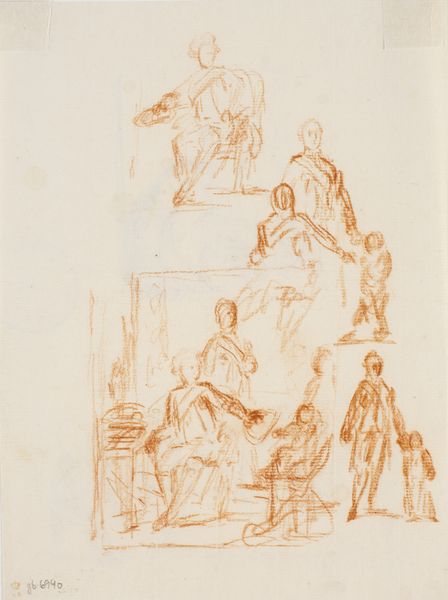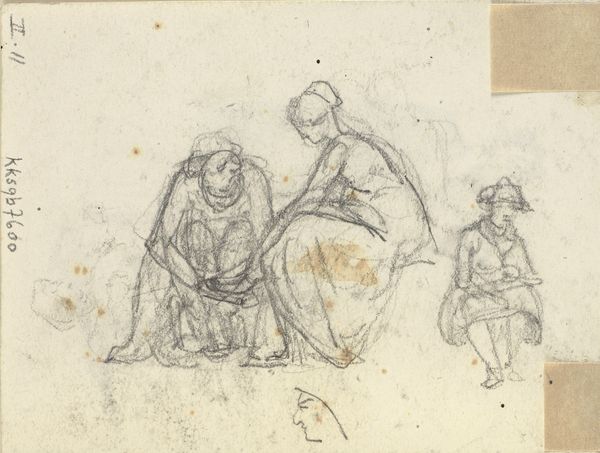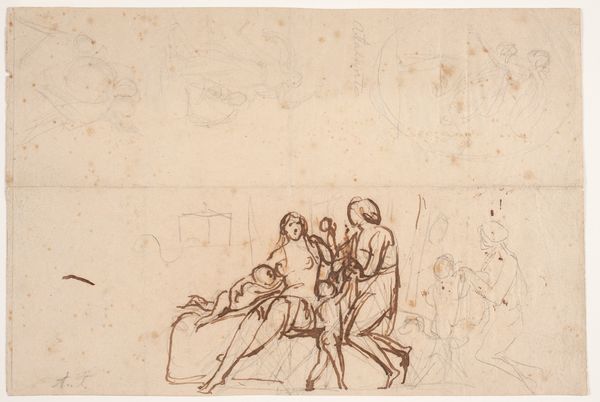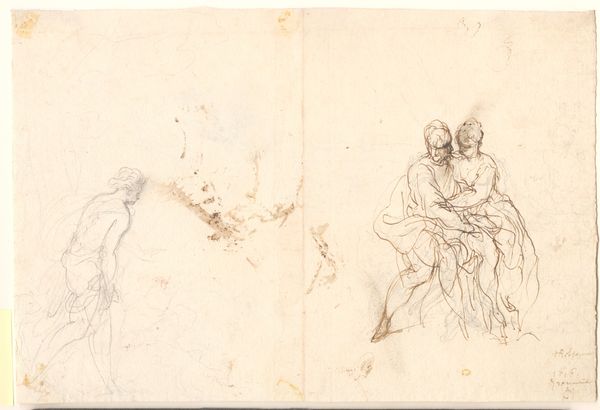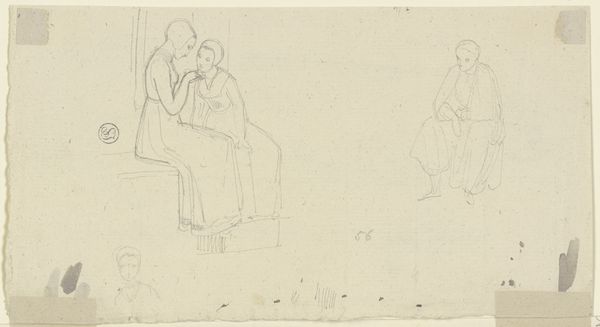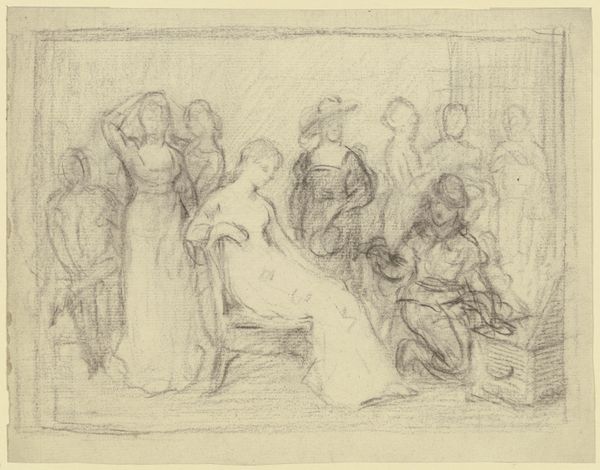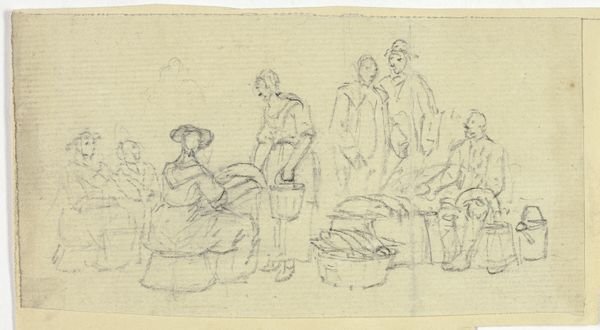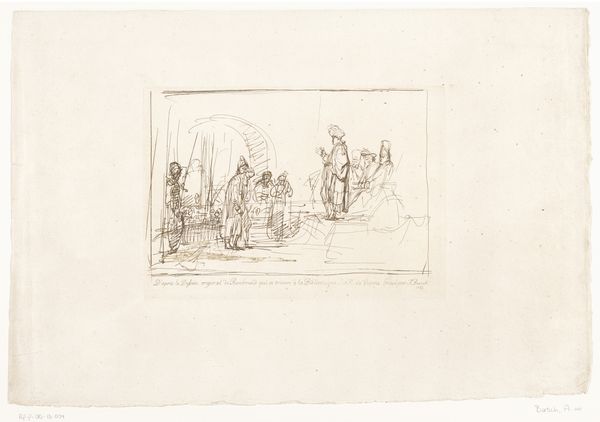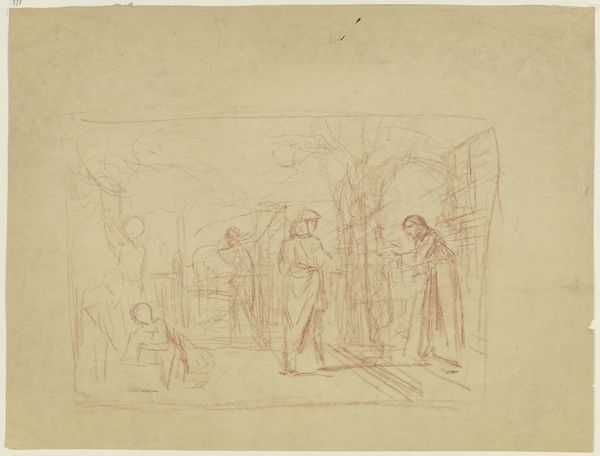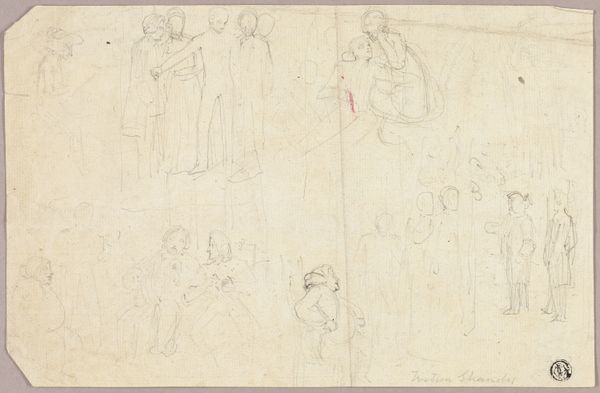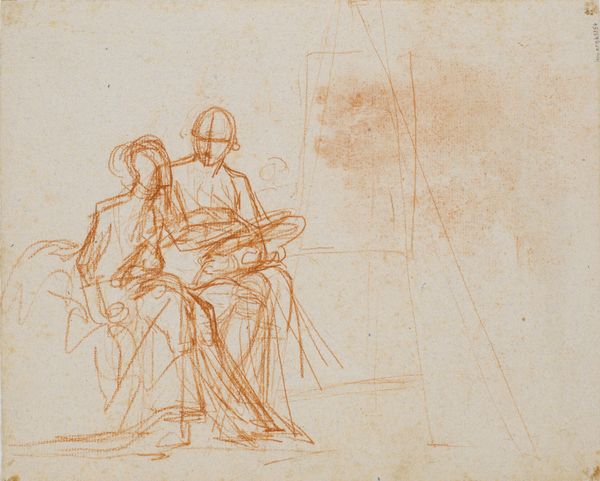
Kompositionsudkast til det Rybergske familiebillede; til højre udkast til en siddende kvindefigur 1796 - 1797
0:00
0:00
drawing, pencil
#
portrait
#
drawing
#
neoclacissism
#
figuration
#
pencil
Dimensions: 191 mm (height) x 271 mm (width) (bladmaal)
Curator: Today, we’re looking at “Kompositionsudkast til det Rybergske familiebillede; til højre udkast til en siddende kvindefigur,” a pencil drawing by Jens Juel, dating from 1796 to 1797. Editor: My first impression is that the rendering feels very light, tentative almost, like the figures might float away. Curator: Well, consider this is not the final work, but a compositional sketch, likely for a formal family portrait of the Ryberg family. Look at the repeated studies; Juel’s process suggests meticulous preparation. Notice how the pencil lines build form gradually, focusing on the draping of clothing and capturing likenesses. Editor: It's fascinating how these sketches hint at the constructed nature of family portraits in that era. They served not just as likenesses but also as carefully curated performances of social status, right? How would a patron like Ryberg have influenced this process? Did Juel use only pencil? What other materials are involved, if any, in the rendering? Curator: I don’t believe he used anything other than pencil to plan the work on paper, then paint. It would be intriguing to examine the relationship between Juel and his patrons regarding material choices. This was the neo-classical moment of idealized representation but think about the material realities underpinning the family's wealth that the portrait quietly announces. What was it actually like to produce such a picture in his workshop? Editor: Exactly! Beyond the aesthetic choices, there's a story about labor, class, and the representation of power. Were women in his studio or not? Were there any working relations within it? We’re seeing here the surface, but it also holds social undercurrents about how families wished to present themselves and to the world. Curator: I agree. Considering the materials and the effort involved allows us to see these images less as neutral likenesses and more as deliberate acts of self-fashioning within a particular socioeconomic context. Editor: And for me, approaching it that way, allows a way for contemporary viewers to feel much more connected to the social circumstances and aesthetic priorities that shaped these artworks centuries ago. It goes far beyond the classical revival to become something immediate.
Comments
No comments
Be the first to comment and join the conversation on the ultimate creative platform.


